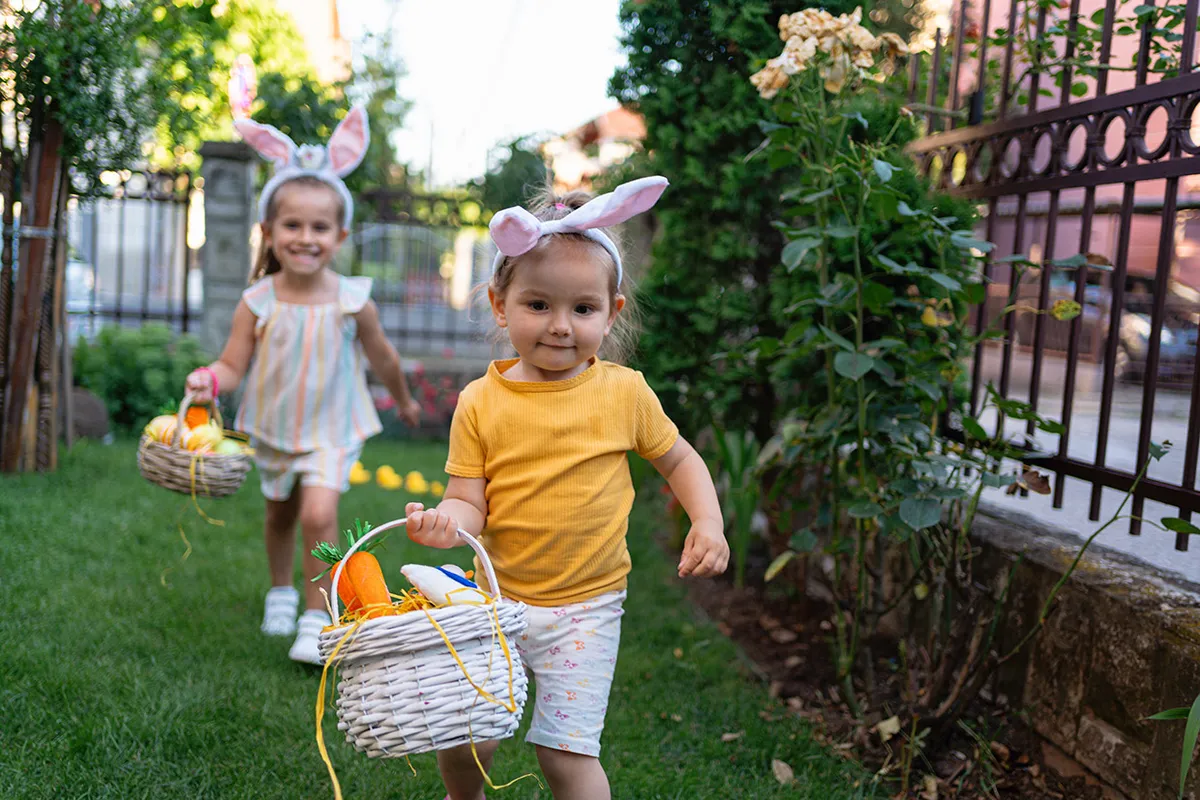Easter is just around the corner so it’s nearly time to crack out the eggs! If you’re scratching your head wondering exactly how to make Easter eggs, then you’re in the right place.
The traditional way to make Easter eggs is by hard-boiling them, however, you can also make them using more alternative methods such as crocheting or needle felting.
You can choose the best method for the eggs depending on who is making them.
If you’ve got children, the traditional method may be best. Once the eggs are hard-boiled and cooled, the kids can take on the creative part: the decoration!
They’ll have lots of fun decorating their eggs, from dyeing shells with food colouring to doodling with paint pens and glitter. We have lots of ideas for you to browse below!
If you’re a bit of a dab hand at crafting, take a look at our alternative methods of making Easter eggs. We’ve got a gorgeous knitting pattern, a timeless painted glass Easter egg project which uses pressed flowers and lots more.
undefinedHow to make Easter eggs in a variety of ways
Jump to:
- How to boil Easter eggs
- How to blow Easter eggs
- How to dye Easter eggs
- Easter egg decorating ideas
- Easter egg decorating kits
- Alternative ways to make Easter eggs
How to boil Easter eggs
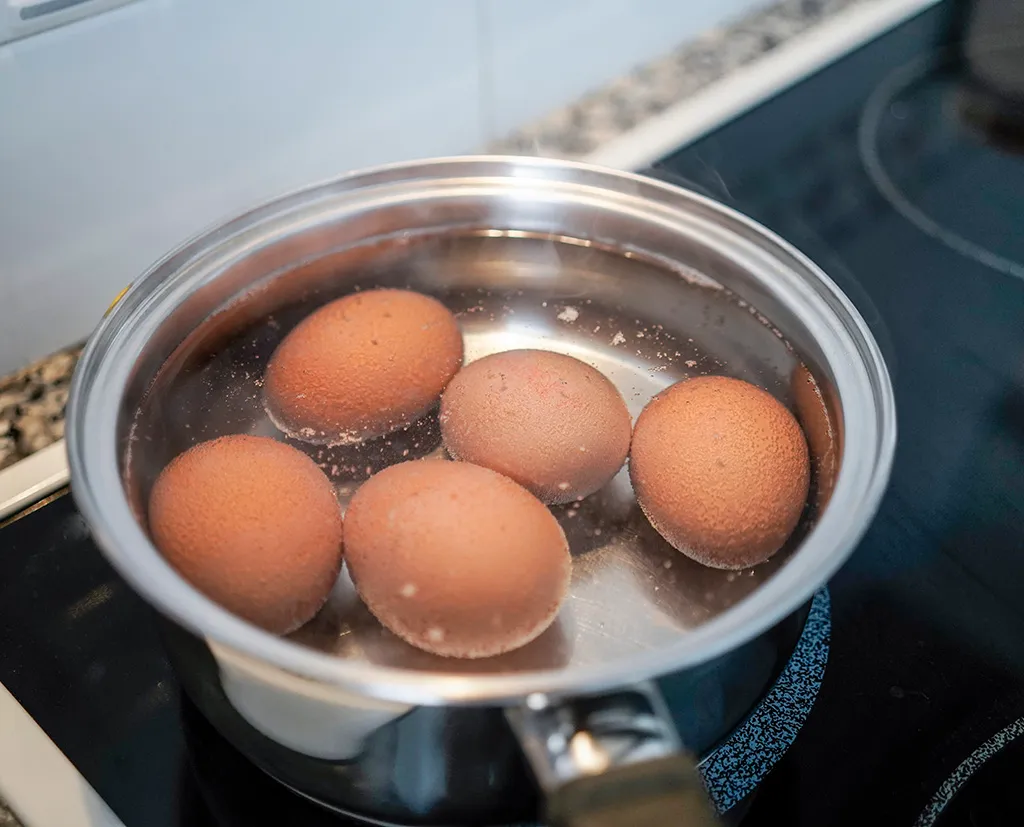
Boiling eggs for Easter is slightly different than if you were making them to eat. You’re going to want to boil the eggs for much longer than usual to ensure they are thoroughly hard-boiled! This means they won’t break and will be perfect for decorating.
Real Simple has a straightforward tutorial for boiling eggs that are ideal for dyeing, painting or decorating.
Boiled eggs are perfect for smaller children to play with and decorate as they aren’t delicate unlike blown Easter eggs (method below).
How to blow Easter eggs
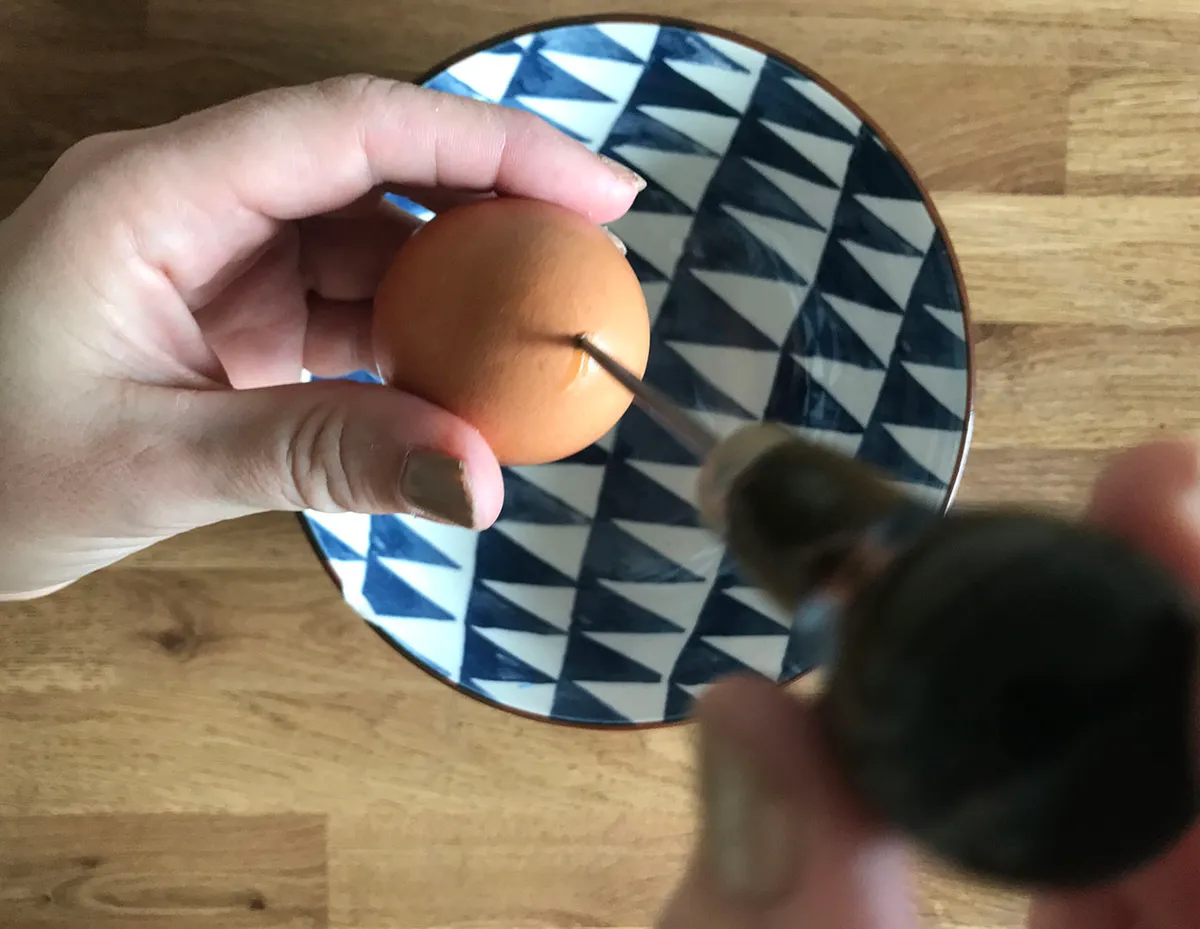
As an alternative to boiling your eggs, you can blow eggs. This means piercing a small hole on either end of your egg, blowing into one hole so the contents come out of the other hole. It’s a quick and simple way to create eggshells ready for decorating.
The benefit of blowing eggs is that you can use the blown egg for cooking and baking, and the shells for decorating, so nothing goes to waste. They will also last longer than hard-boiling eggs.
If you have smaller children, blowing eggs might not be a suitable method as the eggshells will be quite delicate once blown.
How to dye Easter eggs with food colouring
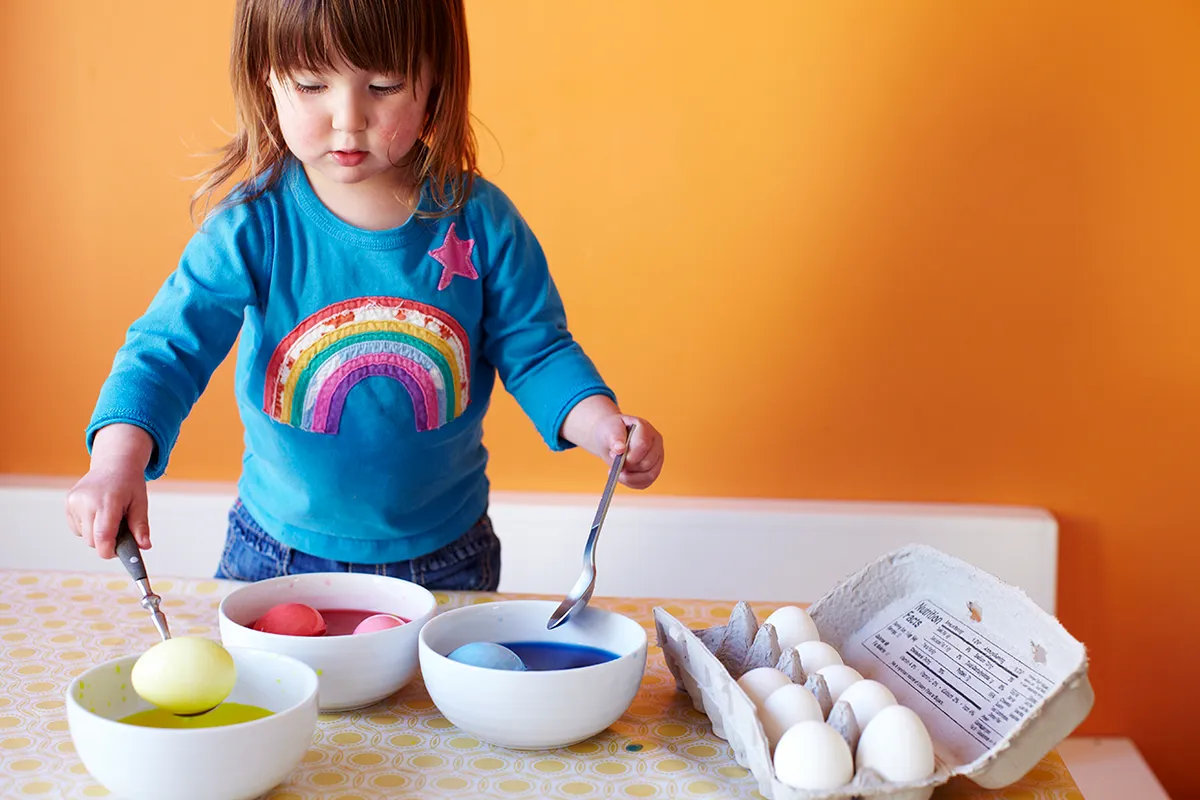
Now you’ve prepped your Easter eggs, it's time to decorate! If you’re choosing to dye your eggs, there’s a couple of methods you can use. The easiest and quickest way to give your eggs a vibrant colour is by using food colouring.
For this method, you only need three things: boiling water, vinegar and food colouring. You then submerge your boiled or blown eggs in the mixture. Leave it longer for a more intense colour.
Check out our full guide on how to dye eggs with food colouring for more information and top tips.
How to dye Easter eggs naturally
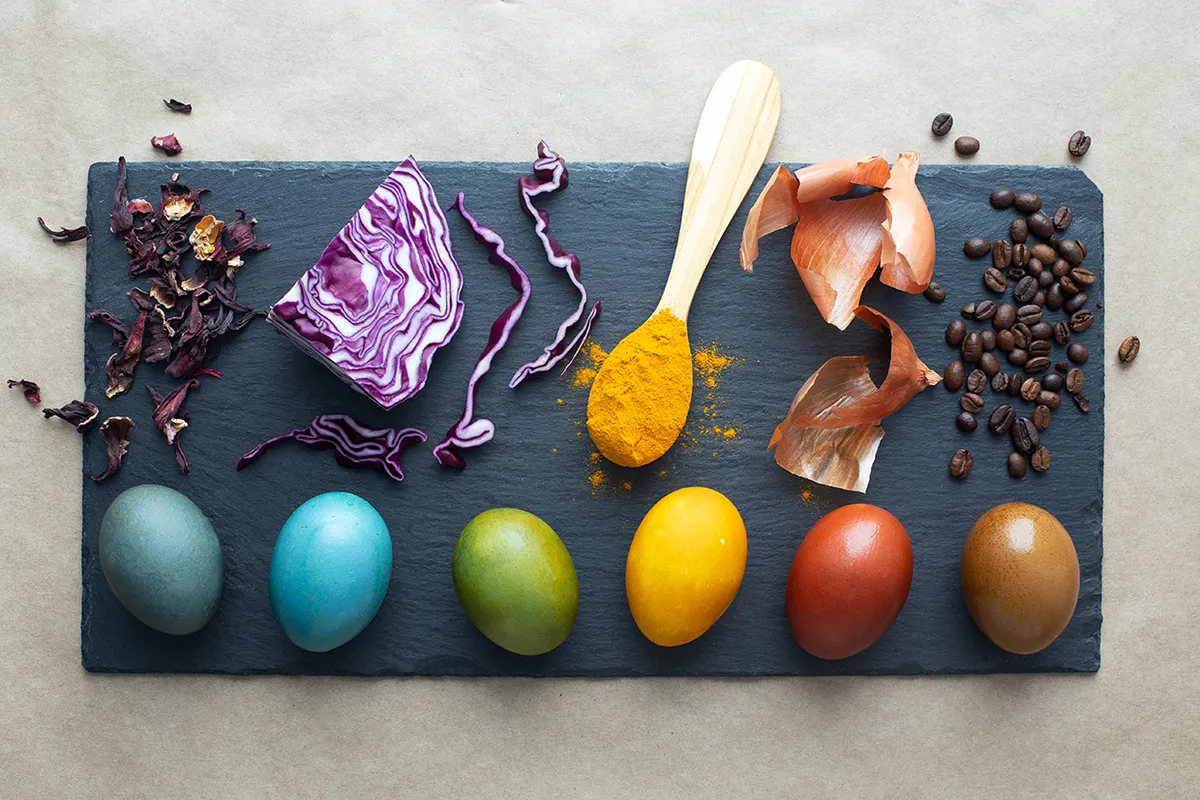
If you’re going for a more natural approach to your Easter crafts, using natural dyes derived from food is a great way to dye your Easter eggs. g
For example, red cabbage will turn your eggs blue, beetroot will make them pink and turmeric will change them to a yellow colour. You’ll need to prep each natural colour source, using a particular method, usually boiling, to release the colour.
We have a guide to dyeing your Easter eggs with natural colours where you can discover which foods to use and how long to soak your eggs to achieve your desired colours.
Easter egg decorating ideas
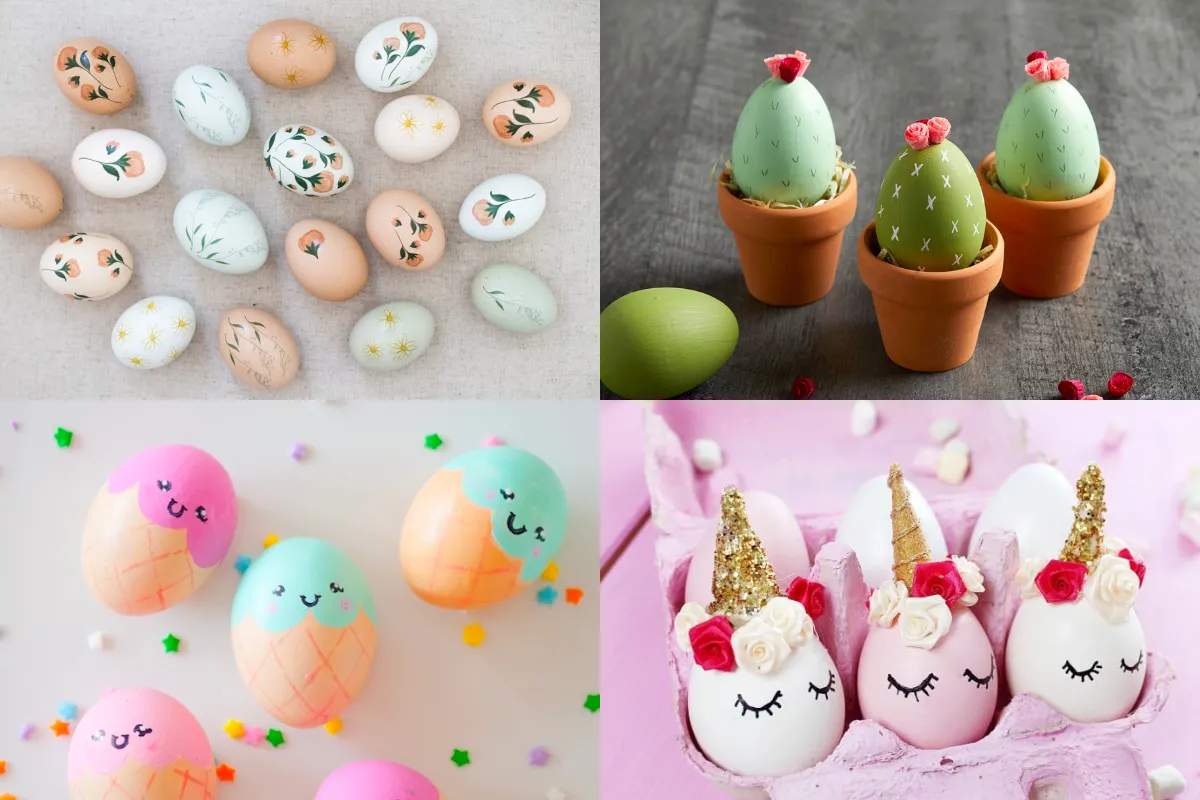
If instead of dyeing your eggs you’d like to go straight in with the paints then we have plenty of creative ideas for you and your little ones.
Whether you want to create cute bunny faces on your eggs, or add a touch of decadence with gold foil, you’ll find plenty of inspiration in our Easter egg decorating ideas round-up.
With over 40 ideas, you’ll discover many inventive ways to decorate your eggs!
Easter egg decorating kits
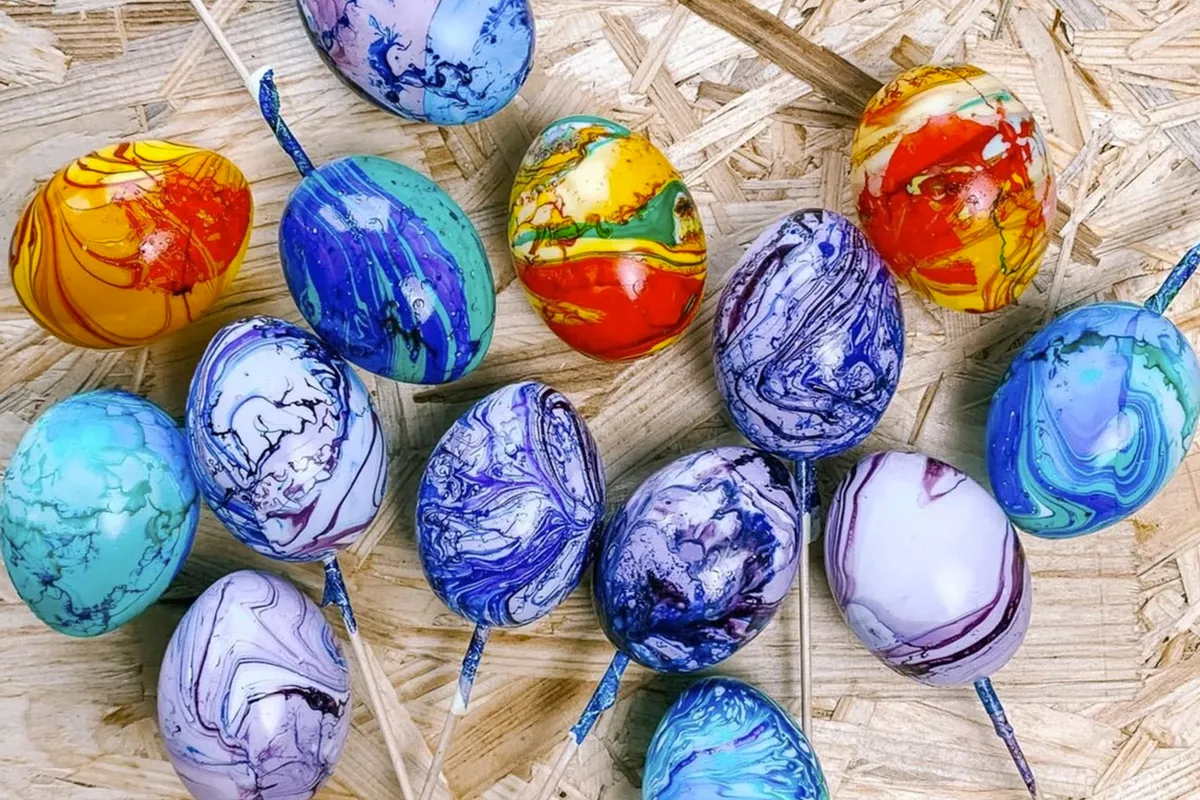
If you want to make things really simple, opting for an Easter egg decorating kit can be a great choice.
With an Easter egg kit, you’ll receive all of the tools you need to make beautifully decorated eggs! Whether you want to dazzle your eggs in sequins or use acrylic pens to doodle there’s a kit for you.
Alternative ways to make Easter eggs
It’s not always convenient to use real eggs, so you might want to omit these altogether and try one of our alternative ways to make Easter eggs.
These projects are mostly suited to adults since they require a more complex level of crafting knowledge.
1. Glass Easter eggs

Glass eggs are a classy alternative to real eggs, and they can be used year after year. In our glass Easter egg tutorial you can choose to decorate your eggs with paint markers, glass paint or pressed flowers.
Pressed flowers make for a beautiful design and they can be easily applied with PVA glue.
2. How to make paper mache Easter eggs

Paper mache is so much fun and kids love it! There’s two elements to our paper mache Easter eggs tutorial. The first is making the egg itself using a balloon and paper mache technique, and the second is decorating.
For the decorating, our tutorial shows you how to make quilled coils to embellish the outside of your egg. These are fun to make but can be a bit fiddly, so this one’s better for older children and adults.
For smaller children, you can create the eggs using the first stage of the tutorial and then paint the dried paper mache using acrylic paint.
3. Knitted Easter eggs
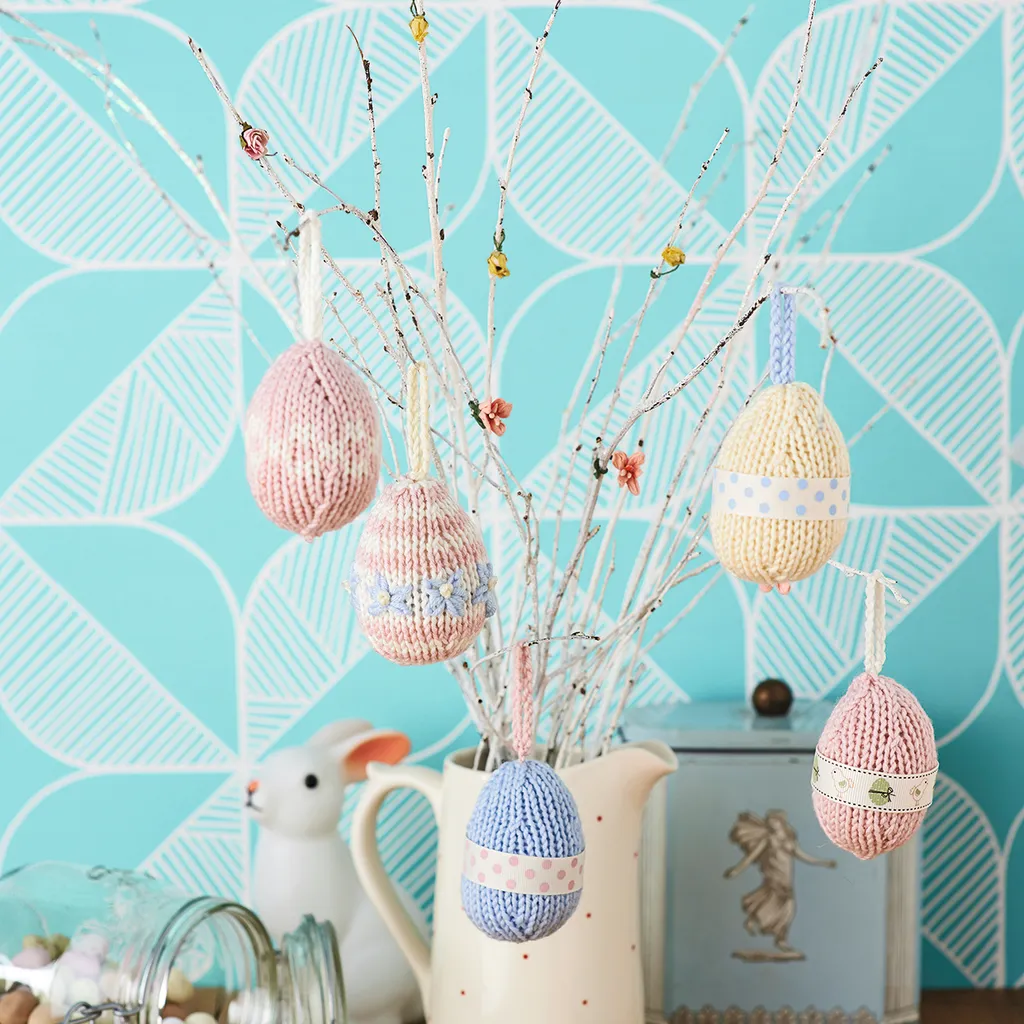
This one is perfect for the yarn lovers out there! Have a go at making these gorgeous knitted Easter egg by Kirstie McLeod.
Not only do they make beautiful Easter decorations, but they’re a great way to use up any leftover scraps of yarn from your spring knitting projects.
Once you’ve worked up a few they make great little Easter gifts, or hung on a tree as decorations like we’ve done.
4. How to make crochet Easter eggs
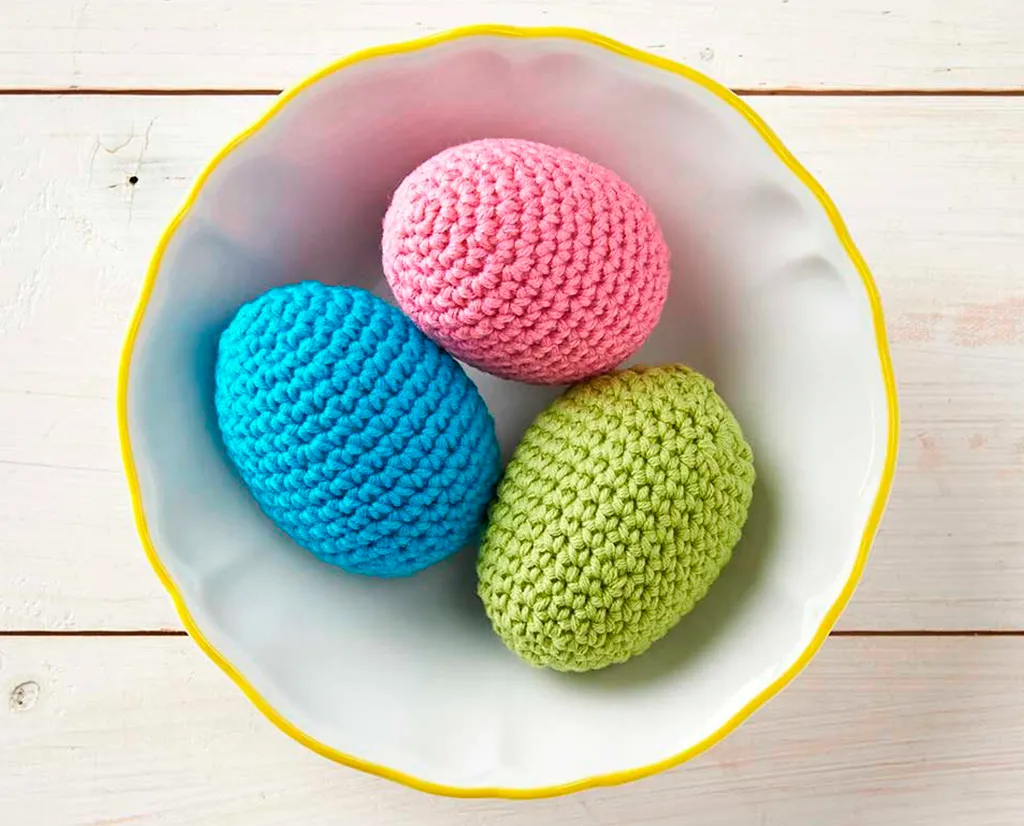
If you’re more of a crochet pro, these crochet easter eggs will be a cracking project for you!
We’ve chosen to use bright candy-coloured yarns for our eggs, but you can use whatever you have in your stash.
These little eggs make beautiful decorations and can be proudly displayed year after year.
5. Needle-felted Easter eggs
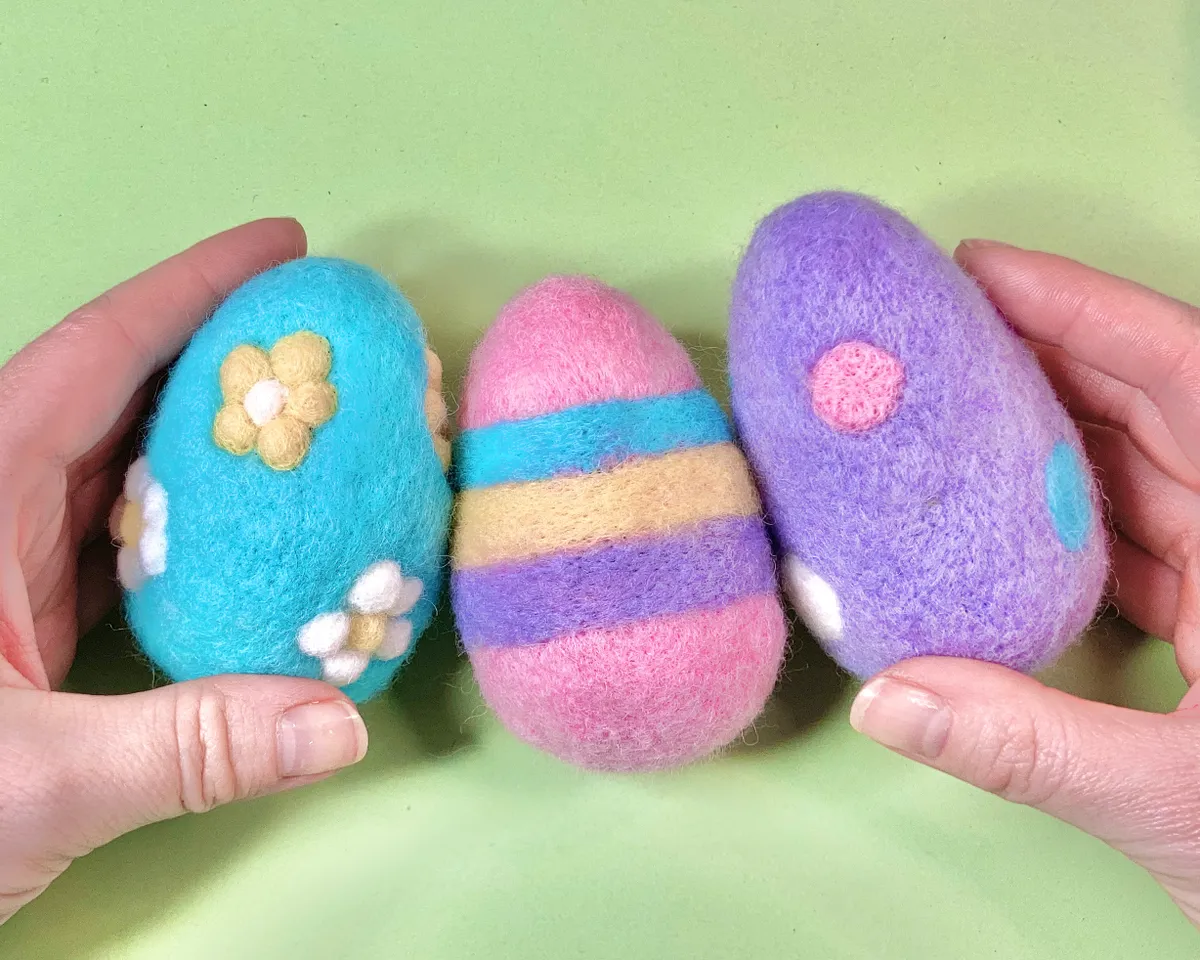
Have you ever tried needle felting? It’s a beginner-friendly and therapeutic craft which results in delicate decorations.
You might have seen this style of decoration in the shops around Christmas time but it works for all occasions and it’s so easy to do yourself.
Have a go with our needle felted Easter eggs tutorial by Nicky Cairney.
6. How to make felt Easter eggs

Make pretty blue eggs with our felt egg embroidery tutorial by Jenny Blair. These sophisticated eggs will make a beautiful spring decoration that can be reused every year.
All you need to make these eggs is felt, embroidery thread and a little bit of stuffing to put inside. It’s a great project for those who love embroidery and want to try embroidery on a different material other than cotton.
How to make Easter eggs in a variety of ways
There are loads of different ways to make Easter eggs, from boiling real eggs to crocheting your own. Whatever method you choose we’re sure you’ll have plenty of fun getting creative over the Easter holidays.
Discover Easter egg hunt ideas for everyone
Now you’ve found your favourite method for making Easter eggs, it's time to put them to good use with an Easter egg hunt.
With everything from treasure maps to glow-in-the-dark eggs, we’ve got loads of ways to make your Easter egg hunt memorable.
